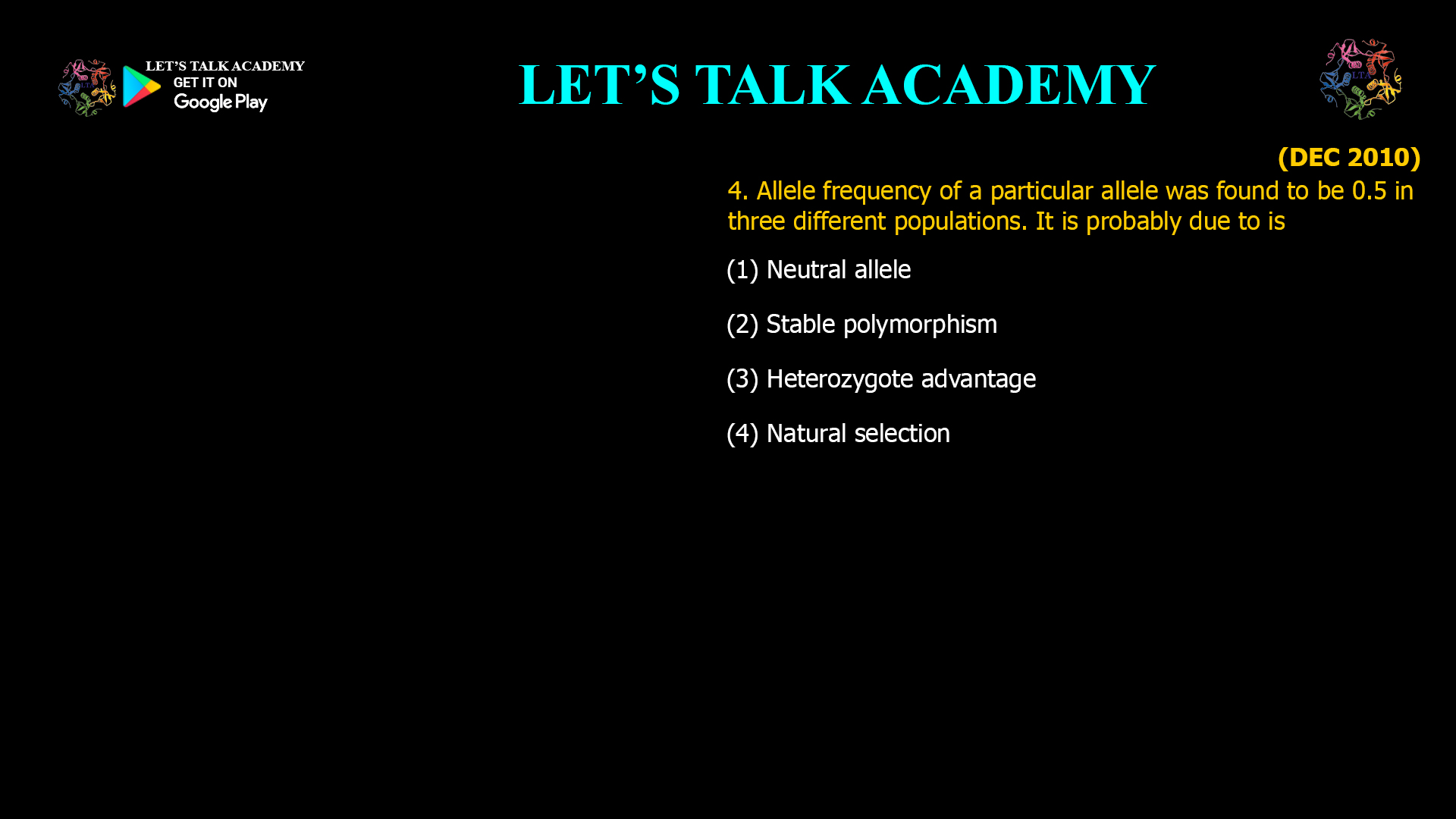- Allele frequency of a particular allele was found to be 0.5 in three different populations. It is probably due to is
(1) Neutral allele (2) Stable polymorphism
(3) Heterozygote advantage (4) Natural selectionWhy Is the Allele Frequency 0.5 in Different Populations? Understanding the Role of Neutral Alleles
In population genetics, the frequency of a particular allele is a key indicator of genetic diversity and evolutionary forces at work. When scientists observe that the allele frequency of a specific allele is 0.5 across different populations, it raises important questions about the underlying mechanisms maintaining this balance. Let’s delve into the reasons why this scenario is most likely due to the presence of a neutral allele.
What Is Allele Frequency?
Allele frequency, also known as gene frequency, is the proportion of a specific allele among all alleles for a particular gene in a population. For example, if an allele has a frequency of 0.5, it means that half of all gene copies at that locus in the population are of that allele134.
Why Would the Frequency Be 0.5 in Multiple Populations?
If three different populations all have an allele frequency of 0.5 for the same allele, it suggests that the allele is neither being strongly favored nor selected against. This equilibrium is most consistent with the action of neutral evolution, where the allele has no significant effect on fitness and its frequency is mainly shaped by random genetic drift8.
The Role of Neutral Alleles
A neutral allele is one that does not affect the organism’s fitness—meaning it is not subject to natural selection. Neutral alleles can drift in frequency due to chance alone, especially in populations that are not experiencing strong selective pressures. Over time, if populations are large and not isolated, the frequency of a neutral allele can remain stable, often hovering around intermediate values like 0.58.
Alternative Explanations
While stable polymorphism and heterozygote advantage can also maintain alleles at intermediate frequencies, these scenarios typically involve specific selective pressures or balancing selection. In contrast, the consistent observation of a 0.5 frequency across different populations, especially in the absence of known selective forces, points most strongly to neutrality as the underlying cause.
Conclusion: The Most Likely Explanation
When the allele frequency of a particular allele is found to be 0.5 in three different populations, it is probably due to the allele being neutral. This means its presence is maintained by random processes rather than active selection or specific evolutionary advantages.
Correct answer:
(1) Neutral allele



